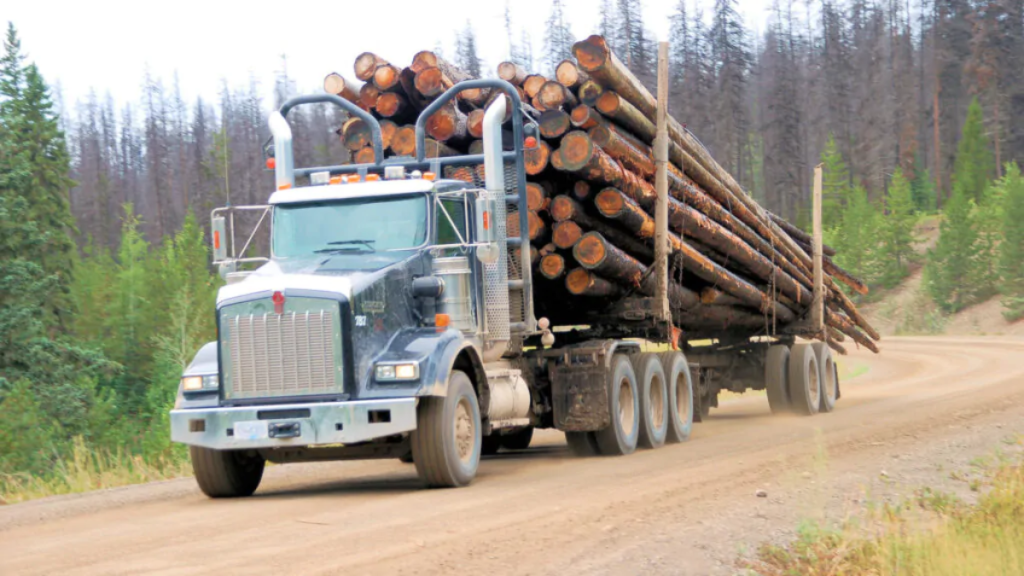Transportation officials and safety advocates are raising alarms over a proposed bill that would permit log trucks to carry increased weight per axle. The legislation, currently under consideration, has sparked debate among lawmakers, trucking industry representatives, and public safety officials.
Supporters argue that allowing heavier loads could improve efficiency for the logging industry, reducing the number of trips needed to transport timber. However, critics, including state transportation agencies and law enforcement officials, warn that the proposed changes could lead to increased roadway damage and heightened safety risks.
Increased Weight Limits and Infrastructure Impact
The proposed bill seeks to raise the allowable weight per axle for log trucks, a move that supporters claim would enhance economic productivity. By increasing weight limits, logging companies could transport larger loads, potentially reducing operational costs and improving profit margins.
However, transportation officials caution that heavier trucks could significantly impact road infrastructure. Many highways and bridges were not designed to support increased axle loads, and the additional stress could lead to accelerated deterioration.
This, in turn, could result in costly repairs and maintenance, placing a financial burden on state and local governments.
A report from the American Association of State Highway and Transportation Officials (AASHTO) highlights that heavier trucks contribute to pavement wear and bridge stress, leading to a shorter lifespan for critical infrastructure.
“Increasing axle weight limits without corresponding infrastructure improvements could lead to long-term structural damage,” said a spokesperson from the Department of Transportation.
Safety Concerns for Motorists and Truck Drivers
Beyond infrastructure concerns, safety advocates argue that increasing weight limits could lead to higher accident risks. Heavier log trucks require longer stopping distances, making it more difficult for drivers to react to sudden changes in traffic conditions.
Additionally, an overloaded truck is more susceptible to rollovers, particularly on winding rural roads where logging operations are common.
Law enforcement officials have also expressed concerns about enforcement challenges. “Monitoring weight limits is already a complex task, and increasing allowable weights could make it harder to ensure compliance,” said a highway patrol officer. “If trucks are carrying loads beyond what their brakes and suspensions are designed for, we’re looking at a serious safety hazard.”
Economic and Industry Perspectives
The logging industry, a major economic driver in several states, supports the bill as a means to increase productivity and remain competitive. Industry representatives argue that advancements in truck design and braking technology have made it possible to safely transport heavier loads without significantly increasing risks.
A representative from a major timber company stated, “Allowing higher weight limits means fewer trips, which can lead to lower fuel costs and reduced emissions. It’s a win for business and the environment.”
However, opponents counter that any short-term savings could be outweighed by long-term infrastructure costs and potential safety liabilities. They urge lawmakers to consider alternative solutions, such as investing in better road maintenance and enforcing existing weight regulations more effectively.

Legislative Debate and Next Steps
The bill is currently under review by transportation committees, with hearings scheduled to gather input from stakeholders on both sides. Lawmakers remain divided on the issue, weighing the economic benefits for the timber industry against the potential risks to public safety and infrastructure.
Some legislators have proposed a compromise, such as requiring additional safety measures for heavier log trucks, including enhanced braking systems, stricter enforcement of load distribution, and designated routes to minimize road damage. Others have suggested conducting further studies to assess the long-term impact of increased weight limits before enacting changes.
State officials emphasize the importance of a balanced approach. “We need to support our industries, but we also have a responsibility to maintain safe roads and protect the public,” said a transportation committee chairperson. “Any changes to weight limits must be carefully evaluated to ensure they don’t create unintended consequences.”
Conclusion: Balancing Economic and Safety Priorities
As the debate continues, stakeholders on both sides agree that transportation safety and infrastructure integrity must remain top priorities. While the logging industry seeks efficiency improvements, transportation officials warn against making changes that could compromise road conditions and public safety.
Lawmakers must carefully consider the potential consequences of increased weight limits, ensuring that any policy changes align with both economic growth and public welfare. With ongoing discussions and further research, the final decision will shape the future of log transportation and highway safety for years to come.
For more details on road safety regulations and transportation policies, visit Federal Highway Administration.
Disclaimer – Our team has carefully fact-checked this article to make sure it’s accurate and free from any misinformation. We’re dedicated to keeping our content honest and reliable for our readers.
